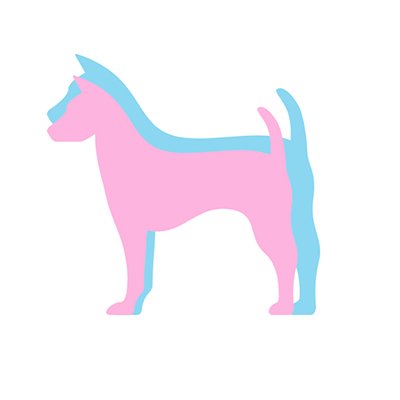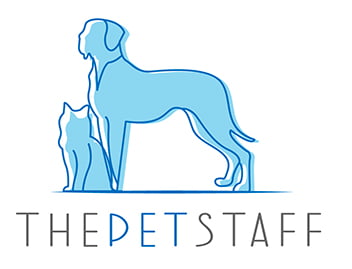The Whoodle is a plush, teddy bear-like hybrid dog breed with a deceptively large amount of energy given its cute, cuddly appearance. This fun-loving dog makes a great family dog or the pet of owners who are out and about and needs a daily companion.
So is the Whoodle a good fit for you? Let's look at some of the breed's needs and overall temperament so you can better understand if this luxuriously silky dog is for you.
Breed Characteristics
Temperament | Friendly, Outgoing, Affectionate, Playful |
Intelligence | High |
Affection/Friendliness | High |
Trainability | Moderate to High |
Mental Stimulation | Moderate |
Exercise Needs | Moderate |
Apartment Living | Suitable |
Family Friendly | Yes |
Pet Friendly | Yes |
Drooling Level | Low |
Energy Level | Moderate |
Loneliness Tolerance | Moderate |
Adaptability | High |
Tendency to bark | Moderate |
Origin
The exact origins and date of the development of the fluffy Whoodle are unknown. The designer breed was likely developed in the mid-1900s along with many of the other poodle hybrids since the allure of a hypoallergenic coat was increasingly popular, and many hybrids were being tested.
The Whoodle is a mixed breed combining the qualities of the unique fur of Soft-coated Wheaten Terriers and the smarts of a Standard Poodle to create a fluffy companion with lots of energy and affection.
The Whoodle is also known as the Wheatendoodle, Wheatenpoo, Sweatendoodle, and Sweaten Poo. The American Kennel Club does not yet recognize this hybrid due to the breed's recent origins and lack of breed standard in appearance or temperament. However, it is recognized by such clubs as the designer dogs kennel club, the international designer canine registry, and the American canine hybrid club.

Breed Overview
Height: 14-20"
Weight: 20-45 lbs
Height: 12-20"
Weight: 20-45 lbs
Breed Group
Hybrid
Life Span
12 - 15 years
Coat
Wavy or Curly
Coat Length
Medium-High
Hypoallergenic
Yes
Shedding Level
Low to Moderate
Size
The Whoodle is a medium-sized breed. However, if the dog was bred with a toy or miniature poodle, it is possible to get a small-sized Whoodle. A standard-sized Whoodle will grow 12-20 inches tall and weigh between 20-45 pounds.
Personality
The Whoodle is an active, enthusiastic, and playful dog. This dog is overall friendly, easy-going, and loves to be around people while still being an affectionate and loving companion.
Appearance/Colors
Whoodles have a silky, medium-length coat that can come in various colors and markings, thanks to the poodle genes. This coat can be black, brown, white, red, fawn, gold, silver, grey, or cream. They have very silky coats that are soft to the touch and consist of loose curly hairs.
Temperament
Whoodle are great, easy-going dogs that can make great family pets. They are good with children and other animals, provided they are trained and socialized early and thrive in active family settings. These hybrid dogs are also great for individuals or families with allergy sensitivities since their coats are generally more hypoallergenic.
Whoodle make good therapy and service dogs. They are very energetic dogs and can be a bit wild, so they must be adequately exercised and trained so as not to accidentally cause harm to anyone or anything in their general excitement. But of course, this will all depend on the individual dog.
Diet/Nutritional Needs
As a medium-sized dog, the Whoodle has pretty basic dietary needs for its size. Quality food should be provided along with fresh water every day. As to the quantity of food, you will want to discuss with your vet what the best course of action is given your Whoodle's age, size, and activity levels.
Activity/Exercise Needs
One of the biggest considerations when it comes to deciding if the Whoodle is for you is whether or not you have the time to commit to this breed's high activity needs. These very active dogs need daily mental and physical stimulation to prevent them from developing negative behaviors like anxiety, destructive chewing, or excessive barking.
These dogs will require daily activities such as walks, jogs, runs, hikes, off-leash dog parks, swimming, and dog sports. It would help if you strived to include your Whoodle in everything you can and let it be a part of your daily life and activities.
For mental stimulation, Whoodles love puzzle games, toys, and games like hide-and-seek and trick training.
Grooming Needs
The other main consideration when deciding if you want to bring a Whoodle puppy home is the amount of time daily you will have to groom your pup's dog hair. While Whoodles may be a low-shed dog breed, their long, silky coats are prone to tangling and mats, which will require daily brushing to keep under control.
This can be managed a bit easier if you have your Whoodle's coat trimmed every two to three months, but even so, you should be prepared to brush your dog every day. Pet owners should also not plan on attempting to bathe their Whoodle themself since incorrect grooming can result in much worse mats and tangles in this high-maintenance coat.
Nails should be trimmed as needed, and ears and eyes examined regularly to check for infection or irritation.
Adaptability
Whoodle are pretty easy-going and adaptable dogs, provided they get to be with their people. These dogs make good apartment dogs if they get adequate exercise but also thrive in homes with big backyards. These dogs do well in cold climates but are a bit more sensitive to heat, so extra care should be taken to keep your Whoodle cool in the summer.
Whoodles can be anxious dogs when left alone, so it is important to plan on bringing your Whoodle along with you in your day-to-day life as much as possible. They are good with other dogs or small pets if they are introduced early and enjoy the additional playmates.
Trainability
Whoodle puppies can be quite headstrong, so training early and keeping consistent will be very important in your Whoodle's puppy years. You will need to establish your dominance and leadership from day one, using positive reinforcement and consistency to train your Whoodle to be respectful and obedient. They are not the easiest dogs to train and may not be a good choice for first-time dog owners or individuals who don't have the time to commit to rigorous training. They are easily distracted, and with their Poodle intelligence, they can be rather willful.
Life Expectancy
The life expectancy of a relatively healthy Whoodle is 12-15 years and potentially longer if they are a miniature or toy breed.
Potential Health Issues
As with most hybrids and designer dog breeds, mixing genes results in fewer health issues overall than in purebred dogs. The Whoodles are generally pretty healthy dogs, the most common health issues stemming from either their poodle parent or their soft-coated wheaten terrier parent.
Kidney Issues
Kidney issues can manifest in several ways and can oftentimes be very serious. Symptoms of kidney issues are kidney failure include pale gums, loss of appetite, lethargy, vomiting, diarrhea, bad breath, ulcers, and weight loss. You should take your dog to a vet immediately if you suspect kidney issues.
Addison's Disease
Addison's disease affects your dog's ability to produce certain necessary adrenal hormones. It is a condition that can be aided and managed with medication.
Retinal Atrophy
Or progressive retinal atrophy (PRA) is a group of degenerative diseases that lead to deteriorating eye cells that eventually lead to blindness. There is no cure available though checking litter parents' health reports can help reduce the chances that your dog could develop PRA.
Hip Dysplasia
Hip dysplasia is a mostly genetic condition that results in the malformation of a dog's joints, either as a puppy or as an adult. There is little a dog owner can do to prevent this condition, and as a progressive and degenerative condition, it will only get worse as your dog ages.
